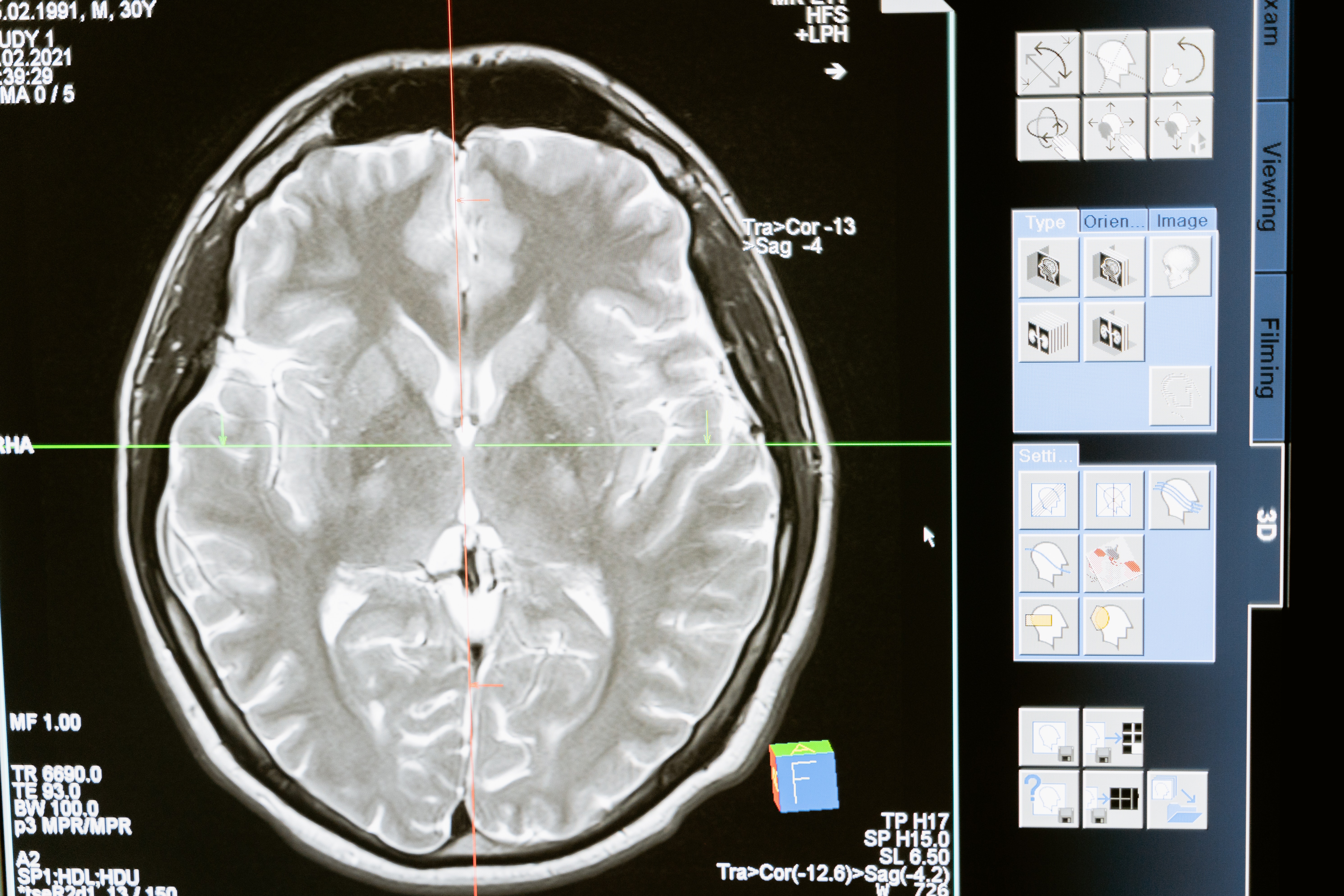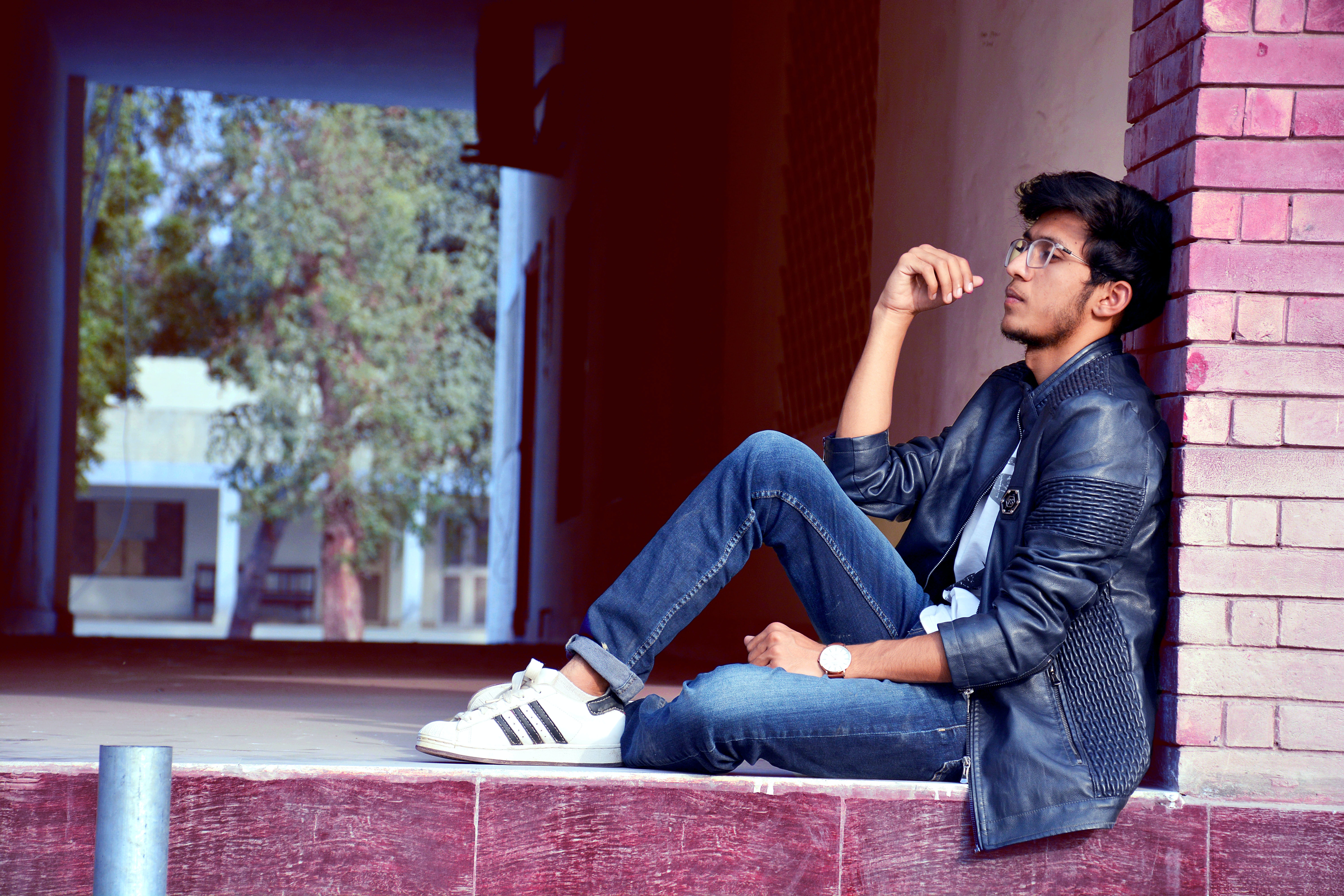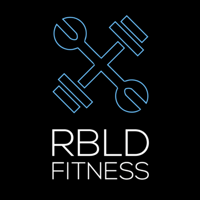Struggling to get over the mental hurdles of consistently dieting and exercising? Looking to...
Avoiding Exercise Is More Exhausting Than Embracing It
The brain is wired to automate repeated thoughts and activities over time. So instead of fighting against our nature, why not learn how it works and use it to our advantage as a means to implement long-term exercise and dieting habits?
This article discusses why and how to do just that.

Chinese Finger Traps
The Chinese Finger Trap is a classic toy typically given to unsuspecting children (or unknowing adults) as somewhat of a joke gift. Dating back to 1870, this bamboo cylinder-shaped device is wrapped in such a fashion that purposefully deceives the brain into thinking it understands how it works, which, in turn, is exactly what traps them.
If you were a kid in the 80s and 90s, you may have seen these at your local Chuck E. Cheese as a prize for winning 25 tickets (probably 50 now; Inflation is a bee-yotch). After turning in your tickets, the minimum wage earning 16-year old (who looked 35 to you at the time) handed you the toy, and it probably took you about 3 seconds to realize you had been duped.
Sorry, NO RETURNS. Plus, the moody teen behind the counter is already in the break room drinking an ICEE.
Transaction: Complete. He’s done with you, peasant.
Confused and coming down from the sugar rush of the eleven Laffy Taffy’s you consumed when mom wasn’t looking (NOTE: I love banana flavor, and I don’t care who knows), you still had the wherewithal to return to the prize counter to re-read the name of the toy you were just swindled into buying.
*Reads “CHINESE FINGER TRAP”*
*Looks at the toy*
*Looks at the title*
*Looks back at the toy, then to your hand. Toy. Hand.*
*Slowly puts finger in one end…*
You weren’t sure what would happen when you did that, but somehow you didn’t realize that the Chinese Finger Trap would actually trap your finger. No worries – you’re a smart second grader, and you can find a way out.
Better try sticking your other finger in the other side as well.
…Now you’re really stuck, and your parents are far away. They're back in the food court counting down the minutes until they can leave with exhausted children who hopefully won’t find them for the rest of the day.
You have a choice to make: Walk like a Tibetan monk all the way back to mom and dad so they can rescue you, or...figure this out on your own.
You look out to see a puddle of melted Blue ICEE covering the staircase which separates you - on the gaming floor - from the arcade equivalent to fire and rescue in the upper level food court.
It's the only pathway between you and your freedom, but you can’t risk walking up those stairs without being able to use the railing. Beyond that, a flock of Kindergarteners are entering into the main play area where you currently reside – alone, stuck, and afraid.
You only have one choice – summon your inner Hercules and puuuullllllll!!!!!!
It doesn’t work. In fact, the pulling seems to make it worse! The more you exert your energy on pulling outward, the more trapped you become. Mom and dad are out of sight, you can’t leave where you are, and asking your friends for help would result in endless ridicule from your peers.
What do you do?!
To be continued...

Energy Usage of the Brain
Here’s an interesting fact – even though our brains weigh about 2% of our overall body weight, it uses about 20% of our body’s daily energy expenditure. Much of this energy usage goes towards decision-making, critical thinking, stress, willpower, and other thought-processing needed to navigate through the challenges of daily life.
Another interesting fact - new thoughts and actions are more taxing on the brain than automated thoughts and actions. To conserve energy, the brain prefers the latter (automation and familiarity) to the former (New thoughts/actions and unfamiliarity), and it seeks to create neural pathways to form habits out of everything we do.
Think about the difference between the energy required to have a 60-minute conversation with a person you just met compared to a conversation with an old and familiar friend. This will require a completely different level of being “on” for the conversation because being “on” requires more cognitive restraint, processing power, active listening and engaging (high-energy expenditure). Being around someone you're familiar with and accepted by provides an arena for you to think less and to simply be yourself (low-energy expenditure).
Or think of the time you have to learn how to play a new board game.
“It will be fun!” your brunch host says. You sheepishly agree after your fourth Grapefruit Rosé Mimosa, and now you’re staring into the wide eyes of an excited thirty-something who can’t wait to explain to you a brand new game with a bunch of rules that you now have to listen to, process, and apply with skill and strategy in the next 5 minutes.
“OK, ready?!” She asks with too much enthusiasm for 11:48 AM on a Sunday.
“I think so...” you reply sheepishly as you gulp down half of your 5th flute.
The I’m never gonna get this feeling you have in that moment is just your brain trying to compute a new source of information that is disrupting the automated flow of thinking and doing you’ve been enjoying through the day, especially as the booze continues to block the neurons in your brain.
It takes a few times, you mess up, but through repetition, encouragement, and reward, you start to get it! Maybe you win a round and celebrate with another beverage. What you may not realize is that you are engaging in the very way the engineers of the game designed it – so you will want to do it again and again.
Very quickly, your brain is migrating the components of this game – which felt new 30 minutes ago – to your long-term memory structure. The more positive ties to that event – a great vibe, delicious snack, flirting with her new neighbor you were hoping she invited – all enhance the solidifying process.
What was temporarily a taxing event in your life has now become a fun, net positive activity that has somehow formed new circuitry within your brain.
If you're not convinced yet, you will be after this next story about Eugene Pauly - one of the most fascinating people you never knew about.
Delegate! Delegate! Delegate!
Charles Duhigg writes in his landmark book The Power of Habit about a man named Eugene Pauly who, at the age of 70, had a portion of his brain surgically removed after it was damaged due to a bout with viral encephalitis. What happened after that has made Eugene one of the most interesting case studies in the history and study of neurology, habit change and memory.
Eugene left the hospital a fully-functioning adult, except for one major caveat – He was stuck in time, unable to recall anything before his hospital stay.
After returning home, Eugene's wife and him tried resume normalcy, but it was clear that would be impossible because Eugene's memory was essentially erased and reset every few moments.
His wife would occasionally drive them to a restaurant for dinner. They would sit at the table, and he would forget where they were or how they got there. When he would come in for a doctor’s visit, the Physician would ask him which turns he took down the halls, what the colors of the walls were, who greeted him upon arrival, and he would have no clue.
When he would see an object in a room that reminded him of something of his past, he would repeat the same thought to his wife every few minutes as if it were a new thought to him…because it was a new thought to him every time.
For his wife, this had to be one of the most difficult times of her life. For Eugene, he was relatively oblivious to it. But here is where the story gets really interesting.
Eugene and his wife would go for walks every morning around the same time and on the same route. She thought it would be helpful and good for Eugene to get some physical exercise and fresh air. So day in and day out, they had the same routine - Wake up, get dressed, walk the route, come home, eat breakfast, and repeat the next day.
This went on for a while until one morning when Eugene wandered off on his own. Upon discovering that he was not in the house, his wife frantically scoured the streets, pounded on neighbor’s doors, and eventually ran back home to call the police so they could begin a search for him. With Eugene out in the world with no ability to remember where he came from just a minute or two before, she knew that things could get very bad very quickly.
After what must have felt like an eternity, Eugene's wife returned to their house and burst through their front door where she found Eugene there, calmly eating breakfast and watching television as if nothing happened…because nothing did happen…that he could remember. Incredibly, Eugene had walked the route himself, made breakfast, and turned on the TV alone, for the first time, but...he had no recollection doing it.
But how?
Doctors were befuddled and amazed, and they immediately got to work on figuring out how Eugene knew which route to take when he couldn’t remember more than a couple minutes prior to any given moment. One doctor went on Eugene’s morning walk with him, all the while asking him questions about where he lived, how he gets home, what landmarks were along the way, etc.
He couldn't tell him.
Doctors later found that Eugene was able to store the memories of those repeated walks into one of the most ancient parts of the brain – the basal ganglia - which has evolved to serve as the brain's primary habit-creating structure. When it came to walking that route, making himself breakfast, watching TV, and other habitual practices, he was able to store memories and automate his actions despite not remembering doing them just a few moments later.
Doctors were amazed. Researchers couldn’t get enough, and as years passed, Eugene would never be able to understand (for more than a couple of minutes) the impact he had on anyone and everyone who ever benefited from studying his life. Eugene died some years later, and his brain has become one of the most famous to have ever existed.
The study of Neuroscience and Habit Change have been forever changed thanks to him.
The case of Eugene Pauly is a powerful example of how wired the brain is to delegate repeated thoughts and actions into automation. To ignore this evolutionary benefit is to ignore our very nature, and it would be a monumental disservice to anyone seeking long-term change in their life.
So what can we learn from this?

What Can We Learn From This?
It's natural for the brain to look for every opportunity to delegate cognitive thought to the incredibly powerful, habit-forming basal ganglia. After all, it's literally trying to reduce energy expenditure and take the path of least resistance by forming a smoother, efficient path.
For centuries, traveling by horse and buggy over a rough terrain was the norm. Doing so took considerable time and effort. Eventually, people decided it made more sense to put in extra time, effort and materials upfront to build roadways and railways which made travel smoother, faster, and easier for the masses. Yes, it was hard work to clear the path, lay down the pavement, build the tracks, engineer the vehicles, etc., but what a breeze traveling is now compared to then.
You get the point, right?
It's normal to feel frustrated and want to quit something that feels difficult. It's as natural a feeling as life itself. What you may come to realize, however, is that putting in the effort of engaging with these new activities to the point of creating new habits is actually the key to reducing stress and strain on the brain for three reasons:
- Obvious Reason: Healthy habits produce positive outcomes: Physically, mentally, emotionally, monetarily, etc.
- Not-So Obvious Reason #1: Knowledge is just your collection of memories. The more long-term memories you have, the easier it will be to make connections to new ones in the future, and the less scary and taxing it is on the brain to receive and process new information.
- NOTE: This is why I enjoy listening to podcasts and reading non-fiction so much. It slowly but consistently adds to my collection of memories (knowledge) that I can make more connections to. I'm not smarter than anyone. I've just exposed myself to more information than some others. Information > Knowledge > Confidence.
- Not-So Obvious Reason #2: The brain can automate tasks we once found difficult (i.e. willing ourselves to meal prep, workout, say no to dessert, etc.). The net effect is that it requires far less brain processing power than before. Essentially, our brains are converting gas-guzzling Ford F-150’s into efficient badass hybrid vehicles that are actually bigger, stronger and faster.

The 80/20 Rule of Discipline
I'm a big believer in the concept of being transformed by working hard for something. It gives us purpose, meaning, fulfillment, and more. And to push against that is not only detrimental to achieving a high quality of life, but I'd argue that it's unnatural. This is how we should look at all new actions and information:
- Absorb new information/try new tasks
- Shed what you don't want, and keep what you do
- Apply it in your life through repetition and reward
- Move it to long-term memory and habit
- Repeat
Given what you’ve read so far, which would you say is more exhausting: Embracing discipline – or – avoiding it?
The answer is obvious.
- Implementing Discipline is exhausting for the first 20% of the time but less exhausting and more rewarding for the remaining 80% of the time.
- Giving into Bad Habits is rewarding for 20% of the time, but the byproduct - poor health, work ethic, money management, love life, etc.) feel difficult for the remaining 80% of the time.
Of course implementing discipline feels painful on the front-end because you’re denying yourself immediate pleasure and rewards. This requires willpower, brainpower, and an overriding of what Art Markman calls “the Go-System” of the brain which is always tries to take the path of least resistance and automation – for better or worse.
We all know that delaying gratification is a good practice, but we're also aware of the never-ending fight against dopamine overload provided by television, social media, porn, sugar, sex, prosperity preachers, etc. There's a tipping point, however, when our investments of discipline and long-term planning starts to pay off. This is typically when we begin to start reaping rewards like:
- Investing in retirement instead of shopping = Earning compound growth and financial freedom
- Working out and dieting instead of staying home and snacking = More confidence, feeling better, and attracting new partners (Or the same partner ;))
- Spending more time on a project at work instead of doing the minimum to earn a paycheck = Fulfillment, promotions, raises, and career flexibility
While we all know it feels good to work hard and live life with discipline, we may not have been consciously aware as to why. You've learned from this article that there are powerful ancient mechanisms in the brain that exist to help you automate your thoughts and actions, relieve energy and stress, and benefit from establishing good habits.
We've been on quite a journey together so far. Let’s bring it home.

Lean Into Your Difficulties
“It is a profoundly erroneous truism that we should cultivate the habit of thinking of what we are doing. The precise opposite is the case. Civilization advances by extending the number of operations we can perform without thinking about them.”
– Alfred North Whitehead, “An introduction to Mathematics”
At the beginning of this article, I left you in suspense with the hero of our story (you as a child) in a finger-locked conundrum. If you didn’t know already or Google the answer, you’ll be happy to learn that you, our Protagonist, in the midst of your terror, found it within yourself to try an opposite solution to the one you had been attempting:
As you pulled and pulled your fingers apart, the trap became tighter and tighter. In a moment of clarity, you realized that if pulling was making it worse, then the opposite might make it better.
You pushed your fingers together and watched the walls of the trap expand outward and loosen until you were able to remove your fingers. You looked up, saw a small pathway on the side of the staircase where you could climb up and use the railing with your now freed hands to go find your parents, with whom you could share your story of genius and triumph.
It was not until you took the time to stop and notice the design of the Finger Trap, how it was sewed and wrapped, the direction of the fibers, etc. that you could realize that your first reaction was insufficient. Once you took the time, thought it through, and worked with the design, you were able to set yourself free.
Good for you, youngling.

Final Thoughts
There is a universal truth to be learned by this. Like the Chinese Finger Trap, our brains work a certain way, and if we learned to lean into its natural design rather than resisting and pulling away, we can be freed of the traps that lie within (i.e. Bad Habits or the resistance of Good Habits).
In fact, you could make the argument that there is nothing more natural and human than to absorb a difficult but worthy task in life, master it, and store it into the very fibers of who we are and what we do - automatically and without thought - as a means to continuously improve while making space for new information and activities as well.
While giving into our basic urges without pushing back can indeed be less taxing on the brain from a short-term physiological perspective, it’s a losing strategy in the long-run because the brain is subject to atrophy and decay if it is not actively challenged. As a result, that weakening of the brain then makes the every-day challenges of life even more strenuous.
Remember, the brain automates our thoughts and actions in every moment of every day whether we like it or not – so I will leave you with this question:
Which thoughts and actions are you turning into habits? And are those habits building the life you want to live?
Be Well,

Teddy Woolsey
I am the owner of the RBLD Fitness Unlimited Coaching Program and RBLD Fitness App
I also write about the intersection of fitness and sustainable behavior change
Let's connect on Instagram: @tedwoolsey





